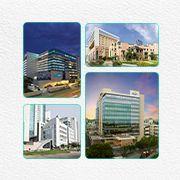Spinal Fusion Surgery: Freedom from Pain
In This Article
Spinal Fusion Surgery: Freedom from Pain
Elena
Updated on November 29, 2024
Medically verified by Dr. Arya
Fact checked by Dr. Fazeela

Wellness
10 min
For some, this curvature is mild and does not cause significant problems, while for others, it can lead to severe pain, posture issues, and mobility limitations.
When non-surgical treatments fail to relieve these symptoms, spinal fusion surgery emerges as a powerful solution.
This advanced medical procedure has helped many reclaim their lives, offering relief from pain and improved spinal stability.
In this blog, Karetrip dives deep into the purpose, procedure, recovery, and benefits of spinal fusion surgery for scoliosis, providing a clear understanding of what patients can expect.
Understanding Scoliosis and Its Challenges
Scoliosis is a complex spinal condition where the spine curves sideways in an "S" or "C" shape. It typically develops during growth spurts in adolescence but can also occur in adults due to age-related spinal degeneration, neuromuscular disorders, or injury.
For those with mild scoliosis, symptoms might be limited to
- Uneven shoulders or hips.
- A noticeable hump on one side of the back.
- Minor discomfort or stiffness.
However, severe scoliosis can result in
- Chronic pain that worsens over time.
- Difficulty breathing due to rib cage compression.
- Impaired physical activities and reduced stamina.
- Emotional stress or self-consciousness caused by visible deformities.
While braces and physical therapy often help in managing mild cases, they might not be sufficient in severe cases. When bracing, pain management, or other treatments fail to address the physical and emotional burden of scoliosis, spinal fusion surgery becomes a viable option.
What Is Spinal Fusion Surgery?
Spinal fusion surgery involves joining two or more vertebrae in the spine, eliminating motion between them. This is done to correct deformities, reduce pain, and provide stability. For scoliosis patients, the procedure aims to straighten the spinal curve and prevent it from worsening.
The surgery typically includes
- Incision and Exposure: Surgeons make an incision along the back, side, or front, depending on the curve’s location and the specific surgical approach.
- Curve Correction: The spine is straightened using metal rods, screws, or hooks. These implants hold the spine in the desired position.
- Bone Graft Placement: Bone graft material (from the patient’s body, a donor, or synthetic alternatives) is placed between the vertebrae to encourage fusion.
- Stabilization: Metal hardware is used to support the spine while the fusion process occurs over several months.
The fusion process solidifies the spine into a single, stable unit, alleviating pain caused by abnormal motion, instability, or pressure on the nerves.
Who Needs Spinal Fusion Surgery?
Spinal fusion is typically recommended for scoliosis patients who
- Have a spinal curve exceeding 45-50 degrees that may worsen over time.
- Experience persistent and debilitating back pain that interferes with daily activities.
- Show signs of curve progression despite bracing or other non-surgical treatments.
- Face complications like lung or heart compression due to severe spinal deformities.
Before surgery is considered, doctors conduct thorough evaluations, including X-rays, MRIs, and physical assessments, to determine the severity of the curve and assess the patient’s overall health.
The decision to proceed with spinal fusion surgery is made collaboratively between the patient, family, and medical team.
The Benefits of Spinal Fusion Surgery
Spinal fusion surgery offers transformative benefits that can significantly improve a scoliosis patient’s quality of life. These benefits include
- Pain Relief: By stabilizing the spine and correcting deformities, the surgery reduces pressure on nerves and muscles, alleviating chronic pain.
- Improved Appearance: Many patients experience a straighter posture, more balanced shoulders or hips, and increased self-confidence.
- Enhanced Mobility: While the fused segments lose flexibility, the overall function and range of motion often improve as pain and deformity decrease.
- Prevention of Curve Progression: The procedure halts the worsening of scoliosis, preventing further complications in adulthood.
- Better Respiratory and Heart Function: For patients with severe curves affecting the rib cage, surgery can relieve pressure on the lungs and heart, improving overall health.
 10 mints
10 mintsVellore CMC: Pioneering Medical Tourism in South India
 10 min read
10 min readA Comprehensive Guide to Medical Tourism in Chennai: Top Hospitals and Treatments
 10 min read
10 min readShop Your Heart Out in Bangalore: Ultimate Shopping Guide!
Get a Callback Now
Risks and Complications
As with any major surgery, spinal fusion carries certain risks. Although modern techniques and experienced surgeons have reduced the likelihood of complications, patients should be aware of potential issues, such as
- Infection: The surgical site may become infected, requiring additional treatment.
- Blood Loss: Significant blood loss during surgery may require transfusions.
- Nerve Damage: Rare but possible, nerve damage can result in numbness or weakness.
Hardware Issues: Screws, rods, or other devices might loosen, break, or require adjustments.
- Nonunion: In some cases, the bones fail to fuse completely, which might necessitate further intervention.
Careful planning, skilled surgical teams, and adherence to post-operative care guidelines significantly minimize these risks.
The Recovery Journey
Recovery from spinal fusion surgery requires patience and a commitment to follow medical advice. Here’s what the process typically looks like
- Hospital Stay: Most patients stay in the hospital for 3-5 days after surgery. During this time, pain management strategies and mobility assistance are prioritized. Nurses and physical therapists help patients start moving safely to prevent complications like blood clots.
- First Few Weeks at Home: In the first month, patients should avoid bending, twisting, or lifting heavy objects. Walking is encouraged to improve circulation, reduce stiffness, and aid recovery. Pain medications are usually prescribed to manage discomfort.
- Physical Therapy: A tailored rehabilitation program often begins a few weeks post-surgery. This includes gentle exercises to strengthen the back, improve posture, and restore confidence in movement.
- Fusion Process: The actual bone fusion process takes time—usually 6-12 months. Follow-up visits with the surgeon are crucial to monitor healing and alignment.
- Long-Term Recovery: By 3-6 months, most patients can return to regular activities, including work or school. However, complete recovery and adjustment to the fused spine can take up to a year.
Throughout recovery, it’s important to listen to your body, avoid overexertion, and seek medical advice if unexpected pain or symptoms arise.
Preparing for Spinal Fusion Surgery
Preparation plays a vital role in ensuring a smooth surgical experience and successful outcome. Here are key preparation steps
- Medical Discussions: Patients should provide their doctor with a full list of medications, supplements, and pre-existing conditions to prevent complications.
- Quit Smoking: Smoking slows bone healing and increases the risk of infections. Patients are strongly advised to quit before and after surgery.
- Plan for Post-Surgery Support: Patients will need assistance with daily tasks, such as cooking, cleaning, or childcare, during the initial recovery period.
- Stay Informed: Understanding the procedure, recovery timeline, and potential outcomes helps patients feel more prepared and confident.
Mental preparation is equally important. Addressing fears or concerns with the surgeon and support groups can alleviate anxiety and promote a positive mindset.
Life After Spinal Fusion
Spinal fusion surgery has helped countless individuals lead active, pain-free lives after scoliosis. While certain lifestyle modifications are necessary—like avoiding high-impact activities or heavy lifting—most patients regain the ability to enjoy hobbies, work, and social interactions without limitations.
Regular follow-ups with the surgeon ensure long-term success, and ongoing physical activity helps maintain spinal strength and flexibility. For many, the surgery is life-changing, offering both physical relief and emotional well-being.
Purpose of Spinal Fusion: Corrects spinal deformities, reduces pain, and stabilizes the spine.
Procedure Details: Involves straightening the spine with rods and screws, followed by bone graft placement for fusion.
Who Needs It: Patients with severe scoliosis or progressive curves unresponsive to other treatments.
Benefits: Pain relief, improved posture, enhanced mobility, and prevention of curve progression.
Risks: Includes infection, blood loss, nerve damage, or hardware-related issues.
Recovery Timeline: Gradual resumption of daily activities within 3-6 months; full recovery in a year.
Role of Physical Therapy: Vital for regaining strength and flexibility after surgery.
Preparation Tips: Quitting smoking, planning post-surgery care, and understanding the procedure improve outcomes.
Long-Term Impact: Most patients experience a higher quality of life and improved physical health.
Importance of Follow-Ups: Regular check-ups ensure the spine remains healthy and stable.

